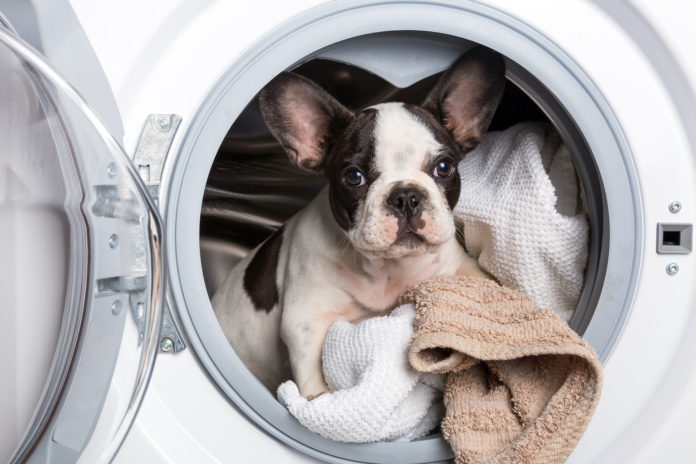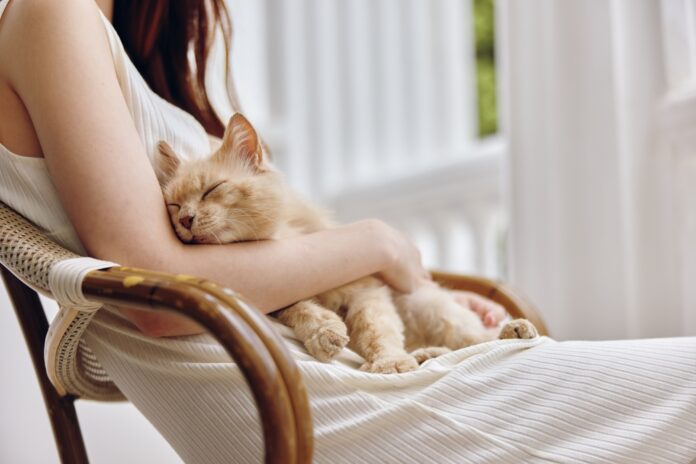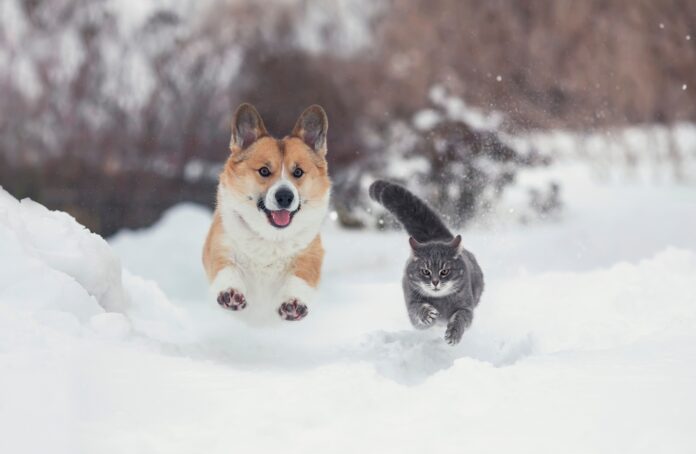Home appliances and your animal – how to keep him safe

To your dog or cat, especially if he’s a youngster, home appliances aren’t just household items – they’re interesting objects to explore, climb, play with – and potentially get injured by. Putting some simple precautions in place will ensure he stays safe.
Is that a clothes dryer or a cozy place for a nap? A vacuum cleaner or a noisy new playmate? A dangling power cord or a chew toy? It’s safe to say our dogs and cats don’t see home appliances the same way we do! While our washers, dryers, stoves, fridges and vacuums comes with numerous safety features to prevent accidents, canine and feline behavior can be difficult to predict, especially when it comes to younger animals who see all household items as potential for fun or comfort. Fortunately, you can minimize the risks to your dog or cat by taking a few extra precautions.
Washer and dryer
The laundry room has a long tradition of providing warm piles of clothes for sleepy animals, especially cats, to snuggle up on, so it’s not surprising they’re attracted to these spaces. Whether you have a front-load or top-load washer, keep the door closed when it’s not in use. Some manufacturers recommend keeping front-load washers open when they’re not being used, as a way to prevent odor, mold and mildew; if this is something you opt to do, carry out a quick safety check before running the machine to make sure your animal hasn’t climbed inside.
Carry out a quick safety check before running the machine to make sure your animal hasn’t climbed inside.
Dryers can be particularly attractive to cats who are looking for a warm, dark place to sleep, so always keep the door closed and double check the inside before starting it up.
Safety tip for you: Clean your lint filter after every use, and scrub it periodically with a nylon brush and hot soapy water. Have a qualified service technician clean the dryer’s interior and venting system once a year, and remove any lint that has collected behind the dryer or in and around the drum.
Oven and range
Know where your dog or cat is when you’re cooking, and keep him out of the kitchen if possible. Accidental burns from touching heated elements, either during cooking or afterwards, are the main risk for animals around stoves, says Lori Bierbrier, medical director of the ASPCA’s Community Medicine Department. Cats especially love warm surfaces, and may jump up on the stovetop if you’re not watching.
If you have a gas range with knobs on the front that are within your animal’s reach, use knob covers to prevent him from accidentally turning on the range with his paws.
If you have a gas range with knobs on the front that are within your animal’s reach, use knob covers to prevent him from accidentally turning on the range with his paws.
Safety tip for you: Whether you’re using your oven or range, monitor what’s cooking at all times. Unattended cooking is a leading cause of fires.
Refrigerator
Dogs and cats are clever, and some learn to open fridge doors all by themselves, because they know that’s where food and treats are stored! The danger is if a cat or small dog gets shut inside by mistake. If your animal has figured out how to get into the fridge on his own, consider a refrigerator door lock designed for children.
Safety tip for you: Clean out the fridge regularly, and discard any foods that are tainted or past their sell-by dates.
Portable kitchen appliances
Keep all cords from small kitchen appliances, such as stand mixers, blenders and electric griddles, out of your dog or cat’s reach, especially when they’re plugged in. Your animal could be electrocuted if he chews on or bites through a plugged-in cord, or the appliance could be pulled off the counter, causing serious injury.
Safety tip for you: The blades on food processers and blenders are sharp and should be treated the same way you would knives. Store them in a safe place and handle with care during cleaning.
Portable heaters
To reduce the risk of burns, keep portable heaters away from areas frequented by your dog or cat. It may feel cozy for him to curl up on front of a heater, but these appliances should have at least three feet of space around them, on all sides. Consider using a baby gate to keep your animal away from portable heaters.
Safety tip for you: Never leave your heater unattended. Also, don’t use it with a power strip or extension cord, as both can overheat and cause a fire.
Vacuum cleaner
Dogs and cats bring companionship, but also additional vacuuming needs. Consider keeping your animal in another room while vacuuming if the noise startles him, says Lori. Some dogs may even see the vacuum cleaner as a threat, and try to attack it. Positive reinforcement with treats and distractions may help him learn to associate the vacuum with something good.
Safety tip for you: Robotic and cordless vacuums use rechargeable batteries. When it comes time to replace them, be sure to dispose of them properly; check with your local recycling center for advice. Purchase replacements only from trusted sources that sell batteries designed specifically for your model of vacuum.
We sometimes take our household appliances for granted, but it’s always vital to keep safety in mind, especially if you have a young and/or curious dog or cat!




